1. Aswang (Female Vampire Ghost)

Aswang is an intelligent supernatural creature that takes roots in Philippines as early as the 16th century. The creature is so fearful that some elders in Philippines refuse to even mention the word ‘Aswang’. There isn’t a clear definition to which class of monsters the Aswang belong to, but they are often depicted as a pretty-faced, fair skinned maiden during the day and transform into hideous vampire in the night with red bulging eyes, disheveled hair and crooked wings. An Aswang can be very deceptive and shy when they are not hunting. They will behave like a normal person and even hold a normal job during the day.
2. Amalanhig (Vampire)
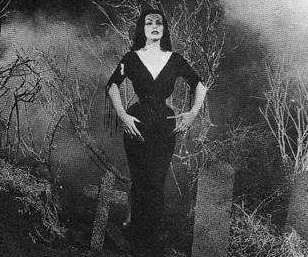
A vampire native of the Philippines, more common in Visayan mythology and folklore, particularly among Hiligaynon speaking groups.
Amalanhig looks almost like a human being except that it has longer upper canines. For Aswangs who were not successful in transferring their monstrosity, they rise from their graves to killing humans by biting their necks hence, becoming into Amalanhig
A good way to escape from an Amalanhig is to run in zigzag direction as an Amalanhig can but only walk in straight direction as their body is stiff. High places out of their reach or climbing of tress as well as lakes and waters are also suggested as Amalanhig are scared of deep bodies of waters. Erm… so Amalanhig is not that scary after all.
3. Langsuir (Alternate Vampire)
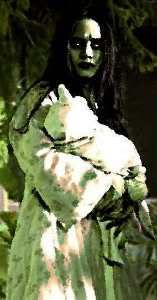
The Langsuir or Langsuyar is a vampire that originates from women who had laboring sickness as a result of suffering the death of their children and who themselves died afterwards.
The Langsuir appears as a woman with long nails and flying black hair. She may also shape shift into a night owl with long claws. Just like the Pontianak, the Langsuir also sucks the blood of living infants. The Langsuir can be stopped or, more precisely, 'domesticated' if the right means are adopted. If a Langsuir is captured, cut her nails away and stuff them into the hole of her neck, she will become a tame, and indistinguishable from an ordinary woman. Probably, you can marry her afterward.
Cases have been known, indeed, in which she has become a wife and a mother, until she was allowed to dance at a village merry-making, when she at once reverted to her ghostly form, and flew off into the dark and gloomy forest from whence she came.
4. Agta/Kapre (Tree Monster)
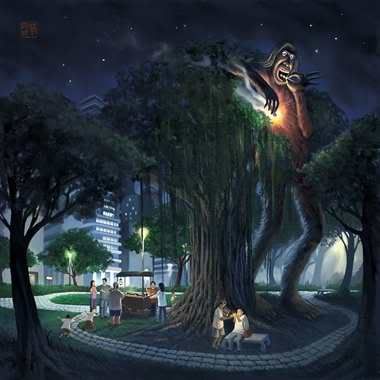
Kapre (also known as Agta in the Visayan dialect (Cebu)) is a Philippine mythical creature that could be characterized as a tree demon, but with more human characteristics.
It is described as being a tall (7 to 9 ft), brown, hairy male with a beard. Kapres are normally described as smoking a big tobacco pipe, whose strong smell would attract human attention. The term kapre comes from the Arabic "kaffir" meaning a non-believer in Islam. The early Arabs and the Moors used it to refer to the non-Muslim Dravidians who were dark-skinned.
The term was later brought to the Philippines by the Spanish who had previous contact with the Moors. Some historians speculate that the legend was propagated by the Spanish to prevent Filipinos from assisting any escaped African slaves.
The Kapre is a unique Filipino monster because he doesn’t steal fetuses, eat people or cut them up. The Kapre simply enjoys scaring children.
5. Tiyanak (Demon Baby)

Tiyanak are babies who died before receiving baptism rites. After death, they go to a place known as Limbo, a chamber of Hell where non baptized dead people fall into, and transformed into evil spirits. These phantasms return into the mortal realm in the form of goblins to eat living victims. The Tiyanak can also be the offspring between a demon and a human.
6. Duwende (Dwarf)
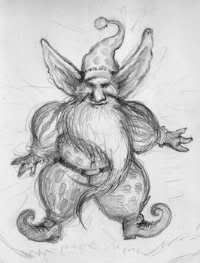
These are tiny human-like creatures that live underground. There are two main types of Duwende: the Duwende puti who are supposedly kind creatures who bring about good luck, or the Duwende itim who are mean folk that like to play pranks on humans. They generally keep to themselves and only interact with humans when their homes are disturbed. For example, a kindly farmer who takes care of his plot may be rewarded by the duwende puti with a greater abundance of crops than usual. However, someone who kicks an anthill on or near the home of a Duwendi itim will be punished with a myriad of ailments from twisted mouth to swollen testicles. The best way to avoid Duwende of any kind is to say “Tabi-tabi po” aloud before entering what might be their space.
7. Amomongo (Big Foot)
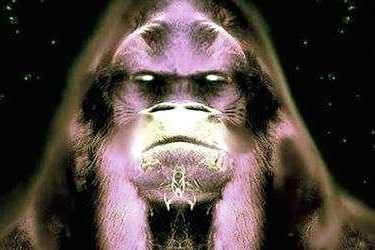
In the Philippine folklore cryptic, Amomongo has a size of man and ape like with long nails. Typically known to be as wild monkey that lives in caves near the foot of Mt. Kanlaon by the people La Castellana in Negros Occidental.
There has been a sighting in which Elias Galvez and Salvador Aguilar reported to Mayor Alberto Nicor and the police that they were separately attacked by a “hairy creature with long nails,” on the nights of June 9 and 10, 2008, in Cabungbungan, Brgy. Sag-ang, La Castellana, Philippines, that was believed to be an Amomongo.
8. Sigbin (Deformed Animal)

Sigbin according to mythological descriptions is said to come out at night to suck the blood of victims from their shadows. The creature walks backward with its head lowered between its hind legs. It resembles a hornless goat, emits a very nauseating smell and possesses a pair of very large ears which are capable of clapping like a pair of hands. It is also claimed to issue forth from its lair during Holy Week, looking for children that it will kill for the heart, which is made into an amulet.
9. Tikbalang (Horse Demon)

The Tikbalang or Tigbalang is a half-man and half-horse creature. It has a horse's head, the body of a human but with the feet of the horse. It travels at night to rape female mortals. The raped women will then give birth to more Tikbalang or Anggitay.
Anggitay is the female counterpart of Tikbalang. Anggitay is a female centaur, sometimes also said to have a unicorn horn in the middle of her forehead. They fancy precious gemstones, and jewelries just like any other women.
the Tikbalang is considered a nuisance but generally harmless. Travelers can easily stop the pranks by turning their own shirt inside out and asking the Tikbalang to stop bothering them.
10. Bakunawa (Sea Serpent)
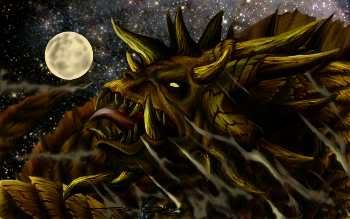
A Bakunawa is a gigantic sea serpent in Philippine mythology, with enormous mouth and a red tongue, whiskers, gills and small wires by its side as well as 2 sets of wings. Besides being known by the name of Bakunawa, it is also known as Bakonawa, Baconaua, or Bakonaua.
Bakunawa is believed to be the god of the underworld as is the one highly responsible for the cause of eclipses. It is also said to be a demonic sea dragon that is a man eater as well as moon eater base on legends and myths.
11. Kumakatok (Grin Reapers)

In the middle of the night, a knock will sound at the door and outside are three hooded figures, one a pretty, young woman and two elderly men. There are no stories of how the group was formed or where they originated but tales about them have popped up all over the Philippines and with more frequency around the time of outbreaks.
Legend has it that a visit from them is an omen that someone in the family will soon die. There are no paintings or hangings that can keep them at bay. Leaving the door unanswered does not help either. They simply knock and leave and then someone would still die shortly thereafter.
12. Kaperosa (White Lady)
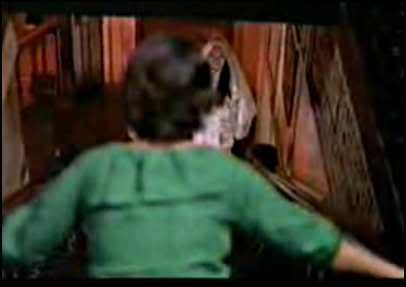
The White Lady is a specific kind of ghost or Multo. Most Multo tend to be family members who come back to certain relatives to take care of unfinished business but the White Lady is unique in that she doesn’t appear to only her relatives or even to specific people she knew when alive. Many sightings have reported her in empty buildings, near forests and on cliffs. However, she is most commonly reported seen along Balete Drive in Quezon City. She was a young lady who was raped and killed by two Japanese soldiers during WWII. While there haven’t been stories of the White Lady being a purposefully malicious being, she has been the reported as the cause of more than a few car accidents by drivers who look in their rearview mirror and see a young lady in the backseat wearing a white dress. Sure, some strange, unknown lady sitting in your backseat is bad enough but the White Lady is also said to have no face or a face covered in blood.
13. Matruculan (Fetish Ghoul)

The Matruculan is one of many Pinoy creatures who attack pregnant women. This particular creature first impregnates a virgin before coming back later to kill the woman and eat the fetus (although some stories say that both mom and baby are eaten). Some stories claim that the woman is not a virgin but rather married and already pregnant. To protect the mother and child, the husband must swing a Balisong or butterfly knife, above the woman’s belly while she is in labor. This leads one to wonder: which is scarier, an invisible mythological creature, or the father of your unborn child brandishing a knife above your abdomen?
Further Sources:
[Top 10 Scariest Filipino Monsters]
[Source Mythical Creatures]
[Source Monstropedia]










MAMATI KA DITA
ReplyDelete]
liars
ReplyDeleteAre these storys true?,and if it is true does it still happen in these days. I don't think you should put these storys up on internet it might scare some one
ReplyDeleteIt's mythological, which means it's a myth. Saying that, many myths are started by people who claim t have seen them, or stories to scare children. So, as with all myths, it may or may not be real. And, yes, reports still happen to the day.
DeleteIt's mythological, which means it's a myth. Saying that, many myths are started by people who claim t have seen them, or stories to scare children. So, as with all myths, it may or may not be real. And, yes, reports still happen to the day.
Delete